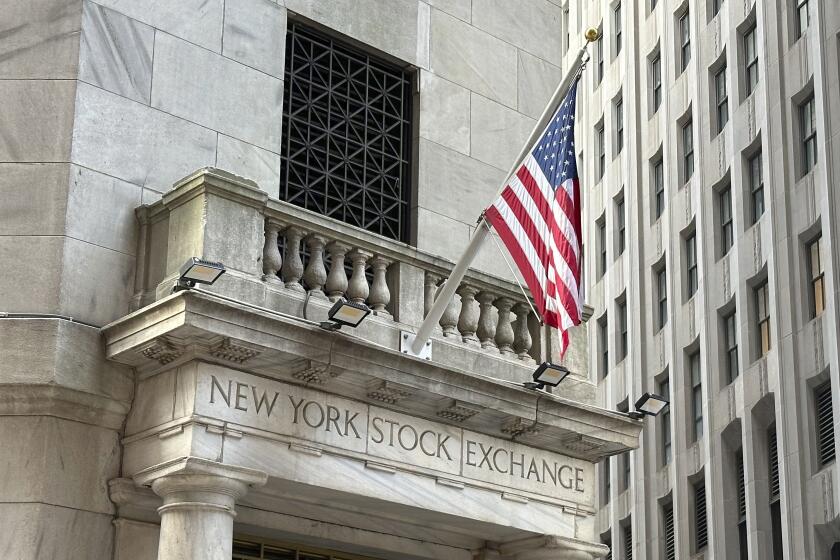Amazon Pays a Price for Marketing Test
Few things stir up a consumer revolt quicker than the notion that someone else is getting a better deal. That’s a lesson Amazon.com has just learned.
Amazon, the largest and most potent force in e-commerce, was recently revealed to be selling the same DVD movies for different prices to different customers. It was the first major Web test of a strategy called “dynamic pricing,” which gauges a shopper’s desire, measures his means and then charges accordingly.
The Internet was supposed to empower consumers, letting them compare deals with the click of a mouse. But it also is supplying retailers with information about their customers that they never had before, along with the technology to use all this accumulated data. Although prices have always varied by geography, local competition and whim, retailers were never able to effectively target individuals until the Web.
“Dynamic pricing is the new reality, and it’s going to be used by more and more retailers,” said Vernon Keenan, a San Francisco Internet consultant. “In the future, what you pay will be determined by where you live and who you are. It’s unfair, but that doesn’t mean it’s not going to happen.”
With its detailed records on the buying habits of 23 million consumers, Amazon is perfectly situated to employ dynamic pricing on a massive scale. But its trial ran into a snag in early September when the regulars discussing DVDs at the Web site DVDTalk.com noticed something odd.
One man recounted how he ordered the DVD of Julie Taymor’s “Titus,” paying $24.49. The next week he went back to Amazon and saw that the price had jumped to $26.24. As an experiment, he stripped his computer of the electronic tags that identified him to Amazon as a regular customer. Then the price fell to $22.74.
“Amazon was trying to figure out how much their loyal customers would pay,” said Barrett Ladd, a retail analyst with Gomez Advisors. “And the customers found out.”
A number of DVDTalk.com visitors were particularly distressed to find that prices seemed to be higher for regular customers. “They must figure that with repeat Amazon customers they have ‘won’ them over and they can charge them slightly higher prices since they are loyal and don’t mind and/or don’t notice that they are being charged 3% to 5% more for some items,” wrote a user whose online handle is Deep Sleep.
Amazon says the pricing variations, which it stopped as soon as the complaints began coming in from DVDTalk members, were completely random.
“It was done to determine consumer responses to different discount levels,” said spokesman Bill Curry. “This was a pure and simple price test. This was not dynamic pricing. We don’t do that and have no plans ever to do that.”
But an Amazon customer service representative called it exactly that in an e-mail to a DVDTalk member.
“I would first like to send along my most sincere apology for any confusion or frustration caused by our dynamic price test,” wrote the company’s Galen Sather. “Dynamic testing of a customer base is a common practice among both brick-and-mortar and Internet companies.”
Physical stores have always had varied pricing. Prices might be higher in an affluent neighborhood or lower, depending on the goods being sold. A stereo system or camera purchased in certain neighborhoods of Manhattan almost always would be cheaper than in a small town with only one electronics store. Industries as basic as airlines and automobiles routinely adjust their prices because of the consumer’s negotiating skills and general savvy.
Still, these traditional methods used to calculate prices are sledgehammers compared with the Internet’s scalpel. For one thing, the Web provides a continuous feedback loop: The more the consumer buys from a Web site, the more the site knows about him and the weaker his bargaining position is. It’s as if the corner drugstore could see you coming down the sidewalk, clutching your fevered brow, and then double the price of aspirin.
“Any retailer would love to do dynamic pricing if they could,” said analyst Ladd. “If you could make the optimum amount of money from a consumer who’s willing to pay more, that’s a beautiful thing.”
Last fall, in a real-world example of dynamic pricing, Coca-Cola Co. was reported to be testing a vending machine that boosted prices for soft drinks when it was hot. Chairman Doug Ivester noted that people watching, say, a sports event in summer heat would naturally develop a powerful craving for a drink. “So it’s fair that it should be more expensive,” he was quoted as telling a Brazilian magazine. “The machine will simply make this process automatic.”
The reaction was swift and brutal, causing Coke to promptly deny it would ever have a vending machine do any such thing. When Ivester was forced out in December, the reason was in part attributed to the public relations fiasco.
An online retailer’s ability to use dynamic pricing is limited only by its number of customers and the variety of products it sells. What person listed in the index of a White House aide’s memoir would not pay full freight to have a copy whisked to his house? Consumers in Los Angeles obviously have a greater need for Armani sunglasses than those in, say, Vermont, and might pay accordingly. Hurricane-preparation kits could be at a premium for Florida residents in the fall. And what parent anywhere--particularly one who lives in a wealthy ZIP Code--wouldn’t happily pay quite a bit more for that hot, hard-to-locate Christmas toy his child desperately wants?
“Amazon knows who has the ability and perhaps the incentive to pay more based on demographics, on purchasing history, on income and urgency,” said Jupiter Communications analyst Mike May. “The variable that they’re deficient on is which customers won’t mind paying more. They don’t know the level of outrage.”
At DVDTalk.com, that turned out to be considerable. The DVD buffs couldn’t figure out exactly what Amazon was doing, but they knew they didn’t like it.
“This is a very strange business model, to charge customers more when they buy more or come back to the site more,” said one user who goes by the online name Kuroiinu. “I have no problem with coupons for first-time customers as marketing enticements, but I thought the idea was to attract customers first and then work hard to keep them. This is definitely not going to earn customer loyalty.”
Others were more blunt. “I will never buy another thing from those guys!!!” wrote one.
Amazon’s Curry stressed that the price test lasted “only a few days” over the Labor Day holiday. But Don Harter, an assistant professor at the University of Michigan, said he saw variable prices on Amazon at least a month before that.
Harter was conducting a study on the difference in DVD prices between an environment with variable pricing--such as the auction house EBay--and a presumably stable one, such as Amazon.
“But my assumption of stable prices on Amazon was wrong,” Harter said. Using two computers to check DVD prices--one through the University of Michigan using his Amazon account, one through Carnegie Mellon University with a computer that was unknown to the retailer--he found that items such as “The X-Files: The Complete Second Season” could vary more than $10 in price.
Amazon’s interest in dynamic pricing extends at least as far back as the spring, when it was discovered to be selling the Diamond Rio MP3 player, which it listed at $233.95, for $50 less to some customers.
That time too, the complaints first surfaced on a message board, with the postees mystified about why some were getting better deals on the player than others. Amazon’s explanation was also the same: that this was a random test. It offered anyone who had paid full price a refund.
While electronic-commerce experts said they didn’t know of any other examples where consumers were being subjected to dynamic pricing, they agreed that it was only a matter of time.
Amazon swears it won’t happen there again. “Dynamic pricing is stupid, because people will find out,” spokesman Curry said.
More to Read
Inside the business of entertainment
The Wide Shot brings you news, analysis and insights on everything from streaming wars to production — and what it all means for the future.
You may occasionally receive promotional content from the Los Angeles Times.






